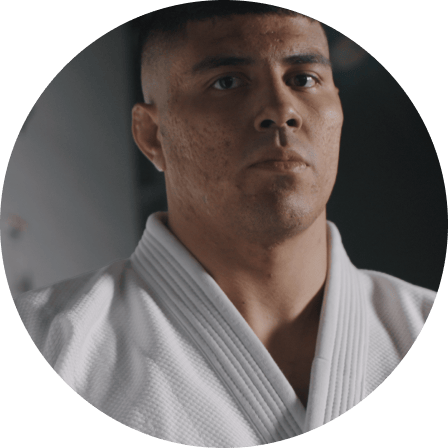
GYMS Act: Federal Legislation Providing Relief for the Fitness Industry Resoruces
FUJI Sports understands that gyms across the country have been devastated by the COVID-19 pandemic. With other industries getting relief, gyms and martial arts centers are being left behind. Join t...

The Merge: MASON PARRIS SHORT DRAG - FRONT HEADLOCK COUNTER
The Short Drag is an excellent technique to escape your opponents front headlock. Michael breaks down Mason Parris' Short Drag from the 2020 RTC Cup and explains the adjustments that are needed wh...

Podcast: Andy Hung, Dojo Outfitters, PDXBJJ & Portland Judo
Andy Hung is a grappling business machine. He is deeply involved in teaching, running a gym (both BJJ and Judo), and also a brick and mortar judo and jiu jitsu experience.I've known about Andy f...
Training Your Martial Arts Dojo Staff [2020 Update] | for BJJ and Judo
Like any successful school, staff training is key. From running classes to interacting with customers - people must be trained. Training provides clarity, structure and comfort. The more something ...
Best Dojo Cleaning Tools for 2020 | Jiu Jitsu and Judo Gyms
The cleaning strategy for your business is now larger than just keeping the floors and surfaces clean. You need to have a strategy for educating and equipping your students with the tools they need...
Class Ideas for Dojos During after COVID-19
Whether you're running online classes or are beginning to open for physical classes, it's for certain that the structure of Martial Arts classes are going to change for the foreseeable future. We'v...
Best Martial Arts CRM Software of 2020 for Academies & Dojos
Running a dojo requires lots of information and maintenance. While staff members and training are key, so is the software you choose to run your business. Picking the right one can make your job a ...

The Mental Game For Martial Artists
This is going to be an ongoing conversation we have here on the FUJI Fit Blog. In today’s post I’m going to touch on a few pieces of mental preparation before competition and we’ll elaborate on eac...

Visualization Is The Path To Victory
In my high school homeroom, there was a slew of cheesy posters plastered to the walls. The only one I remember was this: Shoot for the moon, and even if you miss, you’ll land amongst the stars F...

Visualization Is The Path To Victory
In my high school home room, there was a slew of cheesy posters plastered to the walls. The only one I remember was this: Shoot for the moon, and even if you miss, you’ll land amongst the stars Fi...

The drop seio is one of the most common throws in judo at any level. Adding a component of left on right (i.e. same-sided) complicates the technique a little bit, but does not render it overall im...

How To Get The Sleeve Against Opposite Sided Players
Let's be honest: going against a same sided opponent can overall be a real pain in the butt. Never is this more true than when getting the sleeve left vs. right side. That means if you are a right...

How to Get a High Grip on Same Sided Opponents How to get a high grip on a same sided opponent is a conundrum as old as time. If you've ever struggled to get a high grip on a same sided opponent, ...

Can't Score? Try This Technique.
When going up against same sided opponents, it can be eternally challenging to get a good grip on them. This is especially true if your opponent is playing exceptional defense and keeping you far....

Breaking Down A Stiff Arm Opponents who keep a firm grip on you with stiff arms are everywhere in judo. The beginning judo player is sure to have encountered this. Stiff arms essentially keep you ...

Koshi Garuma To Ouchi Gari - Angie Delgado
If you haven’t heard of Angie Delgado yet, you’re about to know her name as familiarly as the best professional athletes you follow. Angie is the number 1 ranked athlete in the United States in Ju...



